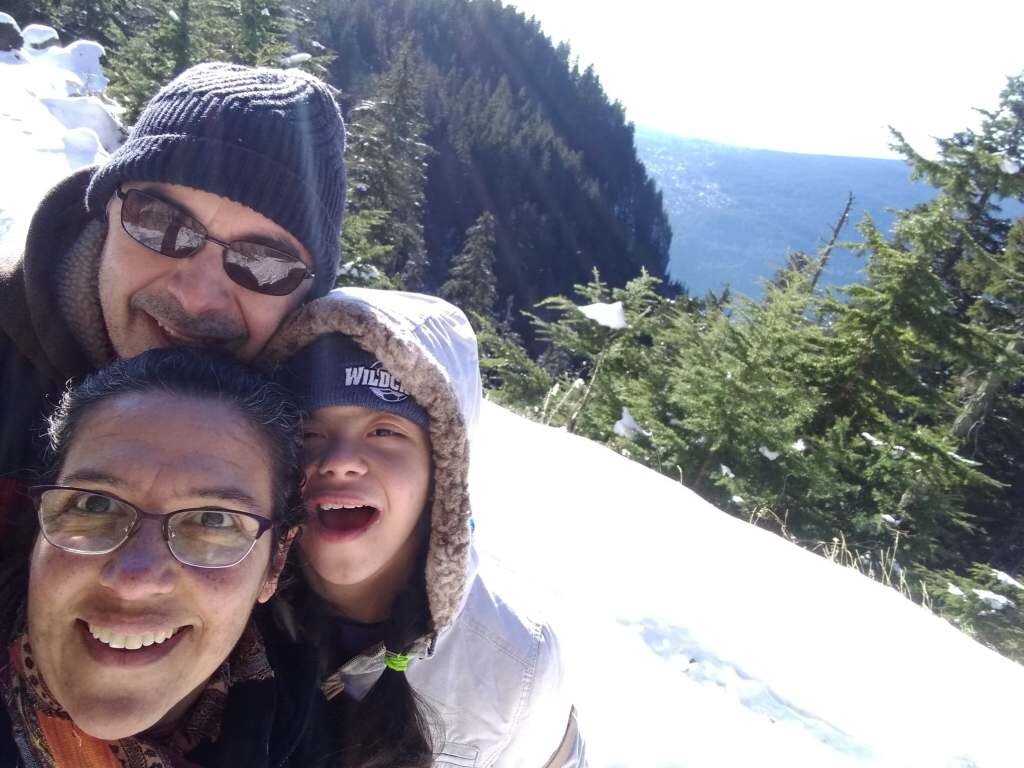Clearing the Way for Systems Change in 2020
11-year-old Salome is a female of color with a disability. English is a second language for her immigrant parents, and her extended family lives far away. Many students like Salome and their families are disenfranchised by the special education process, and don’t feel like they can adequately advocate for inclusion and proper supports under the law.
Salome (right) with her mother and father. (Image taken from Inclusion Evolution)
“I’m always mindful of our privileges and challenges,” says Salome’s mother, Catalina Angel. “In many ways we are like any family with dreams of a good future and in may ways we struggle in a place where we constantly have to demonstrate that we have worth.”
Read Related Post: 5 Ways You Know You’ve Become Your Child’s Best Advocate
Salome’s journey to full inclusion was a rocky one that included self-contained classes and her mother finally realizing she would have to learn the system and change it if she wanted her daughter to get an appropriate education.
One mom’s desire for inclusion for her own daughter turns into a systematic change for all children with disabilities in her district.
”We first needed to learn about how the education system works in this state, because my husband and I were educated in different countries. He is Cuban and I am Colombian. We had to learn a whole new system in a different language. We face multiple layers of challenges and we are still learning how to navigate everything for our family and others,” Catalina explains.
Catalina’s realization is an important one for our community: most of us start advocating for our own child. But if we stop there, and don’t seek systems change for ALL people with disabilities our advocacy work is a dead end. It’s also important to point out the intersectionality of Salome’s experience and how that creates barriers to advocating for systematic change.
What would you like to see change in 2020?
May be it’s an end to sub-minimum wages in your state. It might be a federal increase in wages for Medicaid care providers. Possibly an organ transplant anti-discrimination bill passed in your state. Or maybe you’d like your local school districts to actually follow the continuum of placement by starting in the least restrictive environment (general education with supports) every school year. You may even want to take it a huge step farther and end the continuum of placement all together…honestly, the Individuals with Disabilities Education Act (IDEA) promotes segregation of students with disabilities in “special” classes which research doesn’t back up as best practices.
Read Related Post: When Being “You” Is a Form of Activism
If any or all of these systems changes seem too out of reach to tackle in 2020, remember that all it takes is one person with passion to start a big change.
What are the ingredients for systems change?
The Arc of King County’s Inclusion Academy shared some invaluable tips to creating change. Whether it’s micro-scale (creating an inclusive environment in your school district) or large scale (passing a bill), these 7 elements will help get you there:
Clarity: You need clarity around action. You need to be able to answer: What, why, how, when and where first for the problem you see, then the action to resolve it.
For Salome, barriers to inclusion started with the district special education coordinator’s determination that her neighborhood school “was not equipped to support her.” Catalina says the district even proposed sending her to two separate buildings during her school day to receive academic and related services like OT, PT, and Speech. Our status has a direct impact in Salomé’s opportunities, choices, and development. People have low expectations of Latinos who are not working in the big companies, even if we have higher education. I have a lot of stories of discrimination and barriers to inclusion.”
Data: To convince people to do something differently, you need research on your side. Any potential allies will ask for it. People who haven’t bought into an idea will challenge you.
In Salome’s case, this is an easy find. Federal law and all of the research on Least Restrictive Environment shows inclusion in general education creates the best outcomes for all students. (See 7 New Research Studies to Win the Fight for Inclusion). Salome’s father also used his background in engineering to track her lack of progress in self-contained to make a case for inclusion.
Stories: Unfortunately, data alone is often not enough to make systems change. Many change-makers rely on stories to personalize what’s at stake. Who does this change affect? What do the players have to win or lose?
Catalina says sharing Salome’s experience in a self-contained class convinced others to work for systematic change throughout the district. ”She spent two years in a self-contained class. The general education teachers never considered her as their student. She was followed by adults everywhere. She expressed her frustration with anger and desperation so she was labeled as an ‘aggressive and violent’ student. It was a constant battle and still it’s hard for her to articulate in words.”
Allies: You need friends who share your vision and goals. You do not have to create a formal coalition, but allies will want direction. They will want to know what they should do. They will ask for talking points and specific ways to help.
This key element is what really changed Catalina’s advocacy from an individual fight for her own child to a systematic change for all children with disabilities in her district. “I got highly involved with the special education PTSA where I met wonderful parents who taught and encouraged us. I talked with the Washington Office of Education Ombusd (OEO) for advice and clarification of the law around Less Restrictive Environment (LRE) and requested to tour schools based on other parents’ experiences and some teachers’ we know,” Catalina explains.
Champions: You need someone who can influence the system or organization that you want to change. This can include civic leaders, other organizations, professionals in the field, well-respected community members. It can also include unexpected voices – like students.
In 2017, Catalina got her champion: a change of leadership in her district’s Student Services department. “The SpEd PTSA, the new Director of Student Services and a small number of administrators agree to become a Special Education Advisory Council last year with the intention to build a collaborative relationship and to strengthen the communication between the District and the community in benefit of the students. The district has agreed to provide training for parents, guardians and caregivers on IEP, behavior supports and other topics of interest. The parent group is creating dialogs to inform the district on what is working and what needs attention.” Learn more about how to form a Special Education Advisory Council (SEAC) in your district here.
Media: The news media and social media can be effective in explaining research, telling stories, and validating your cause. Be sure to first identify your audience; that will help you identify appropriate media partners.
Celebration and Maintenance: Catalina says “Salomé is now included in all the areas. She receives direct instruction from multiple sources, general and special education teachers know her goals and have high expectations. She knows who to go when she needs support and sometimes peers step up to do it too. She knows she belongs to the whole student body.” Celebrate every small and big step towards systems change, and remember to remain vigilante. Thank people often and publicly.
Salome and her family are unlikely change-makers. The intersectionality of race, language, and disability often works against students seeking a free and appropriate education in the least restrictive environment. Most system changers are white, affluent, well educated families with connections. But Salome’s family shows that passion and hard work can lead to systems change:
“My advice to immigrant, and second and third generation of immigrant families are to meet other parents. Learn the law and stay connected. Advocacy is key for the future of our children. School advocacy is just the beginning. The need to advocate for individuals with disabilities to live a full life is never ending. Please get back to your community once you’ve learned how to advocate. There will be parents with younger children just like us who are starting their journey and they need more than individual advocacy efforts- they need systems change!” Catalina says.
To read more from Courtney, click on the link below to follow her blog.


